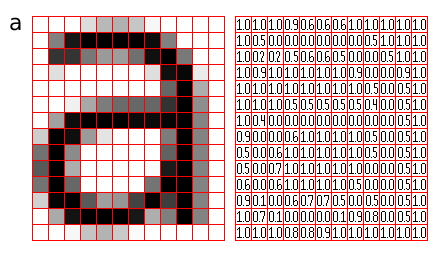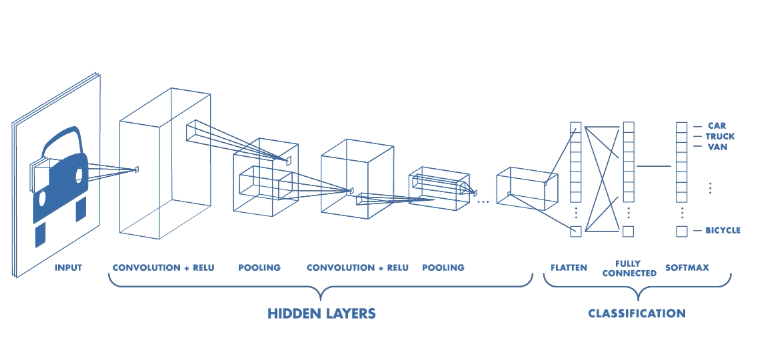A Convolutional Neural Network, also known as CNN or ConvNet, is a class of neural networks that specializes in processing data that has a grid-like topology, such as an image. A digital image is a binary representation of visual data. It contains a series of pixels arranged in a grid-like fashion that contains pixel values to denote how bright and what color each pixel should be.

Figure 1: Representation of image as a grid of pixels (Source)
The human brain processes a huge amount of information the second we see an image. Each neuron works in its own receptive field and is connected to other neurons in a way that they cover the entire visual field. Just as each neuron responds to stimuli only in the restricted region of the visual field called the receptive field in the biological vision system, each neuron in a CNN processes data only in its receptive field as well. The layers are arranged in such a way so that they detect simpler patterns first (lines, curves, etc.) and more complex patterns (faces, objects, etc.) further along. By using a CNN, one can enable sight to computers.
Convolutional Neural Network Architecture
A CNN typically has three layers: a convolutional layer, a pooling layer, and a fully connected layer.

Figure 2: Architecture of a CNN (Source)
Convolution Layer
The convolution layer is the core building block of the CNN. It carries the main portion of the network’s computational load.
This layer performs a dot product between two matrices, where one matrix is the set of learnable parameters otherwise known as a kernel, and the other matrix is the restricted portion of the receptive field. The kernel is spatially smaller than an image but is more in-depth. This means that, if the image is composed of three (RGB) channels, the kernel height and width will be spatially small, but the depth extends up to all three channels.
#computer-vision #writing-nn #convolution-network #cnn #fashion-mnist #neural networks